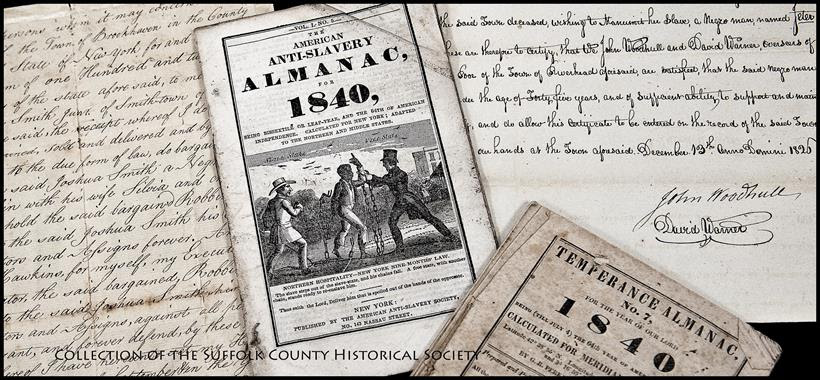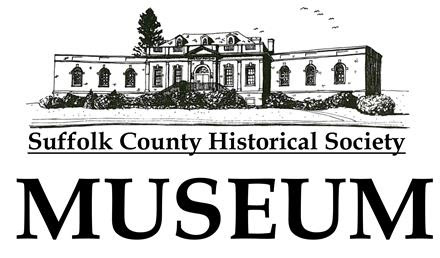

Photo of the Week
FROM THE SCHS LIBRARY ARCHIVES
“How shall we know it is us without our past?”
– John Steinbeck
—————————-
The American Anti-Slavery Almanac, 1840
by Wendy Polhemus-Annibell, Head Librarian
********

The American Anti-Slavery Almanac for 1840. (Image collage features primary source documents in the Collection of the Suffolk County Historical Society Library Archives Copyright (c) Suffolk County Historical Society. All rights reserved.)
Slavery was officially abolished in New York State in 1827, less than two hundred years ago, and this week President Joe Biden signed into a law a bill designating June 19–or Juneteenth–a federal holiday in recognition of the end of slavery in the United States.
Juneteenth National Independence Day became the 12th legal federal holiday, and the first new one since Martin Luther King Jr. Day was signed into law in 1983 by then-President Ronald Reagan.
On Long Island in 1698, some 1,100 slaves called “bondsman” resided here; 10 percent of the population of Southampton was enslaved at this time. In 1749, some 3,400 slaves resided on Long Island; and in 1775, on the eve of the American Revolution, there were 5,000 enslaved people. Manumissions (the freeing of slaves) increased during and after the Revolution. In 1788, a manumission law was enacted that provided for freeing slaves but protected those who were elderly or ill from being freed without adequate provisions for their care. New York declared that all children born of slaves after July 4, 1799, were free, though the owners could retain the male child’s service until age twenty-eight and the female’s until age twenty-five. However, the slaveowner could also elect to abandon his claim to the child’s service and pass the responsibility for supporting the child to the state.
A state law enacted in 1817 provided that by 1827 all slaves in New York would be considered free.
———————
SUGGESTED READING: Grania Bolton Marcus, Discovering the African-American Experience in Suffolk County, 1620-1860 (Cold Spring Harbor, NY: Society for the Preservation of Long Island Antiquities, 1995).
~~~~~~~~~~~~~~~~~~~~~~~~~

Before the 1800s, art was largely reserved for the wealthy, but with the invention of lithography in 1796 – and particularly color lithography in 1837 – printers were able to mass-produce beautiful color prints that were cheap enough for anyone to buy. Suddenly, art was available to all–from such notable printers as Louis Prang, Napoleon Sarony, and Currier and Ives. Featuring themes of nineteenth-century life in landscapes, cityscapes, seascapes, and more, as well as rare examples of “lithographic Long Island,” this exhibit captures the evolution of an American art form.
Our newly renovated Grand Staas Gallery includes a new ceiling and paint, upgraded climate control, and “green energy-efficiency” lighting, earning us the recognition of a PSEG “Certified Green Energy Business”!
~~~~~~~~~~~~~~~~~~~~~~~~~~~~~~~~~~~~

www.suffolkcountyhistoricalsociety.org
~~~~~~~~~~~~~~~~~~~
To View 2014 Photo of the Week pages click here.
To View 2015 Photo of the Week pages click here.
To View 2016 Photo of the Week pages click here.
To View 2017 Photo of the Week pages click here.
To View 2018 Photo of the Week pages click here.
To View 2019 Photo of the Week pages click here.
To View 2020 Photo of the Week pages click here.
To View 2021 Photo of the Week pages click here.
———————–

————————–

AAQ / Resource: Sotheby’s International Realty
___________________________________________________
